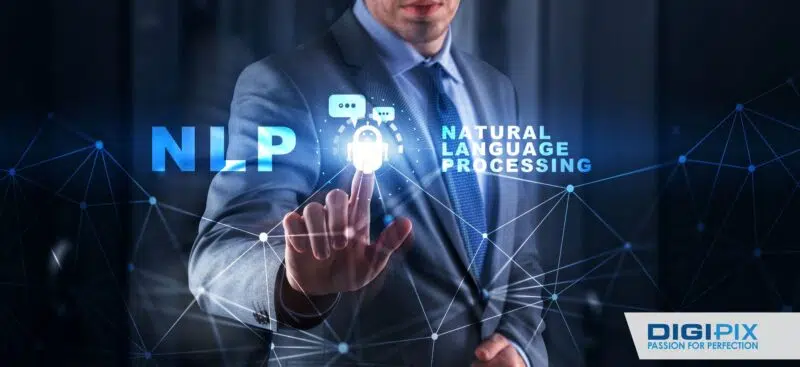How to Use Python for NLP and Semantic SEO?

In the ever-evolving landscape of search engine optimization (SEO), the integration of Natural Language Processing (NLP) has become a crucial strategy for enhancing search engine visibility and user experience. Python, with its robust libraries and tools, is at the forefront of this integration. Here’s a comprehensive guide on how to use Python for NLP and semantic SEO.
Understanding NLP and Semantic SEO
Natural Language Processing (NLP) combines computer science, linguistics, and artificial intelligence to enable computers to process and understand human languages. Semantic SEO, on the other hand, focuses on the meaning and context of content to improve search engine rankings and user satisfaction.
Why NLP in SEO?
NLP helps search engines transition from a keyword-matching-based system to a semantic-based information retrieval system. This shift, often referred to as moving "from strings to things," allows search engines to deeply understand search queries and documents, providing more accurate and relevant results.

NLP(Natural Processing Language)
Key NLP Techniques for SEO
1. Tokenization
Tokenization is the process of breaking down text into smaller units called tokens. This is fundamental for various NLP applications, including SEO, where it enhances content discoverability and user satisfaction.
|
Tokenization Technique |
Description |
Example |
|
Word Tokenization |
Breaking text into individual words |
"This is an example sentence" -> ["This", "is", "an", "example", "sentence"] |
|
Sentence Tokenization |
Breaking text into individual sentences |
"This is an example sentence. This is another sentence." -> ["This is an example sentence.", "This is another sentence."] |
|
Subword Tokenization |
Breaking words into subwords or word pieces |
"unbreakable" -> ["un", "##break", "##able"] |
Using Python libraries like NLTK and spaCy, you can easily implement tokenization techniques to optimize your text data for better search engine performance.
2. Text Preprocessing
Text preprocessing is essential for cleaning and preparing text data for other NLP tasks. This includes noise removal, normalization, and stopword removal.
- Noise Removal: Removing unnecessary characters and words.
- Normalization: Lowercasing text and removing stopwords to maintain consistency.
- Stopword Removal: Eliminating common words that do not provide valuable information.
Here’s an example of text preprocessing using Python:
python
import nltk
from nltk.corpus import stopwords
from nltk.tokenize import word_tokenize
text = "This is an example sentence with stopwords."
stop_words = set(stopwords.words('english'))
words = word_tokenize(text)
filtered_text = [word for word in words if word.lower() not in stop_words]
print(filtered_text)
3. Named Entity Recognition (NER)
NER is the process of identifying and classifying named entities in a text, such as people, organizations, and locations. This technique is crucial for understanding the context of your content and enhancing brand recognition through schema markup.
Using spaCy, you can perform NER as follows:
python
import spacy
nlp = spacy.load('en_core_web_sm')
text = "Microsoft bought Activision for $68.7 billion on January 18."
doc = nlp(text)
for entity in doc.ents:
print(entity.text, entity.label_)
Unlock the benefits of local SEO with DigiPix our proven strategies connect your business with nearby customers, increase foot traffic & drive qualified leads.
Improve your local search rankings, appear in Google Maps results & build credibility with campaigns designed to maximize your reach.
See measurable growth with enhanced visibility, more website visits from local customers & a strategy focused on dominating local searches.
Start Free Now
4. Part-of-Speech (POS) Tagging
POS tagging involves categorizing words based on their grammatical function. This helps in analyzing the structure of sentences and understanding the importance of words in different contexts.
Here’s an example using spaCy:
python
import spacy
nlp = spacy.load('en_core_web_sm')
text = "This is an example sentence."
doc = nlp(text)
for token in doc:
print(token.text, token.pos_)
5. Text Embeddings
Text embeddings transform words and phrases into numerical vectors, encapsulating their semantic meanings. This is essential for improving search engine visibility by allowing machines to understand the context and meaning of text.
Using libraries like Mistral AI Embeddings API, you can create vectorial representations of text:
python
from mistralclient import MistralClient
client = MistralClient(api_key="your_api_key")
text = "This is an example sentence."
embedding = client.get_embedding(text)
print(embedding)
Implementing Text Classification for SEO Insights
Text classification is a powerful technique for categorizing content based on relevance and intent, which improves search engine visibility.

Google Search Console Insight
1. Supervised Learning
This involves training models on labeled data using algorithms like Logistic Regression, Support Vector Machines (SVM), and Decision Trees.
2. Unsupervised Learning
This is useful for clustering and discovering patterns in data without predefined labels, using techniques like K-Means Clustering and Hierarchical Clustering.
3. Deep Learning
Leveraging neural networks for complex text classification tasks using libraries like TensorFlow and PyTorch.
Here’s an example of supervised learning using scikit-learn:
python
from sklearn.feature_extraction.text import TfidfVectorizer
from sklearn.model_selection import train_test_split
from sklearn.linear_model import LogisticRegression
# Sample data
texts = ["This is a positive review.", "This is a negative review."]
labels = [1, 0]
# Vectorize text data
vectorizer = TfidfVectorizer()
X = vectorizer.fit_transform(texts)
y = labels
# Split data into training and testing sets
X_train, X_test, y_train, y_test = train_test_split(X, y, test_size=0.2)
# Train a logistic regression model
model = LogisticRegression()
model.fit(X_train, y_train)
# Predict on test data
predictions = model.predict(X_test)
print(predictions)
Unlock the benefits of local SEO with DigiPix our proven strategies connect your business with nearby customers, increase foot traffic & drive qualified leads.
Improve your local search rankings, appear in Google Maps results & build credibility with campaigns designed to maximize your reach.
See measurable growth with enhanced visibility, more website visits from local customers & a strategy focused on dominating local searches.
Start Free Now
Real-World Applications of NLP in SEO
1. Entity Analysis
Entity analysis helps in understanding what entities are most common on a given page, which can guide your content strategy. Libraries like Dandelion.eu API and spaCy can be used for this purpose.
2. Topic Mapping
Topic modeling identifies hidden topics in a body of text, which can help in creating topical authority and improving content relevance.
3. Competitor Analysis
Using NLP, you can analyze competitors’ SEO strategies, identify gaps, and uncover opportunities. This includes scraping competitors’ pages to extract meaningful entities and understand their content structure.
Tools and Libraries for NLP in SEO
Here are some of the most useful Python libraries for NLP and semantic SEO:
|
Library |
Description |
Use Cases |
|
spaCy |
Advanced NLP library for tasks like NER, POS tagging, and text processing |
NER, POS tagging, text preprocessing |
|
NLTK |
Comprehensive library for NLP tasks including tokenization and text classification |
Tokenization, text classification, stopword removal |
|
scikit-learn |
Machine learning library for tasks like text classification and clustering |
Text classification, clustering |
|
Mistral AI Embeddings API |
API for creating text embeddings |
Text embeddings for semantic SEO |
|
Dandelion.eu API |
API for entity recognition and other NLP tasks |
Entity recognition, competitor analysis |
Steps to Implement NLP in SEO with Python
Step 1: Keyword Research and Content Planning
Identify relevant keywords and plan your content strategy. Use tools like SEMrush and Ahrefs to find keywords with low to medium competition.
Step 2: Text Preprocessing
Clean and preprocess your text data using techniques like noise removal, normalization, and stopword removal.
Step 3: Named Entity Recognition and POS Tagging
Use libraries like spaCy to perform NER and POS tagging to understand the context and structure of your content.
Step 4: Text Classification
Implement text classification using supervised, unsupervised, or deep learning techniques to categorize your content based on relevance and intent.
Step 5: Integration with SEO Tools
Sync your NLP outputs with your SEO tools and CMS to automate the optimization process.
Conclusion
Using Python for NLP and semantic SEO can significantly enhance your search engine optimization strategies. By leveraging techniques like tokenization, text preprocessing, NER, POS tagging, and text classification, you can improve content relevance, drive organic traffic, and gain a competitive edge in the digital landscape.
Unlock the benefits of local SEO with DigiPix our proven strategies connect your business with nearby customers, increase foot traffic & drive qualified leads.
Improve your local search rankings, appear in Google Maps results & build credibility with campaigns designed to maximize your reach.
See measurable growth with enhanced visibility, more website visits from local customers & a strategy focused on dominating local searches.
Start Free Now
FAQs
What are the key steps to leverage Python for Natural Language Processing (NLP) and Semantic SEO?
Using Python for NLP and Semantic SEO can significantly enhance your website's content and search engine performance. Here's a step-by-step guide:
1. Set Up Your Python Environment:
- Install Python and essential NLP libraries like NLTK, spaCy, or Gensim.
- Set up a virtual environment to manage dependencies.
2. Text Preprocessing:
- Use NLTK or spaCy for tokenization, removing stop words, and stemming/lemmatization.
- Clean and normalize your text data.
3. Keyword Extraction and Analysis:
- Implement techniques like TF-IDF or TextRank to identify key phrases and topics.
- Use libraries like Gensim for topic modeling to understand content themes.
4. Entity Recognition:
- Utilize spaCy or NLTK for Named Entity Recognition (NER) to identify important entities in your content.
5. Sentiment Analysis:
Employ TextBlob or NLTK for sentiment analysis to gauge content tone and emotional impact.
6. Semantic Similarity:
Use word embeddings (Word2Vec, GloVe) to measure semantic relationships between words and phrases.
7. Content Optimization:
- Analyze your content's readability using metrics like Flesch-Kincaid.
- Suggest improvements based on NLP insights.
8. Schema Markup Generation:
- Automatically generate structured data markup based on content analysis.
9. Search Intent Analysis:
- Use NLP to categorize search queries and align content with user intent.
10. Performance Monitoring:
- Implement Python scripts to track SEO metrics and content performance over time.
By following these steps, you can create more semantically rich content, improve your website's relevance for target keywords, and enhance overall search engine visibility. Remember to continuously refine your NLP models and stay updated with the latest SEO best practices for optimal results.
Request A Quote
Written By: Khurram Qureshi
Founder & consultant of DigiPix Inc.
Call or text: 416-900-5825
Email: info@digipixinc.com
About The Author
In 2005, Khurram Qureshi started DigiPix Inc. which started off as a design agency offering video editing to professional photography, video production & post production, website designs and 3D Animations and has now expanded towards online marketing and business consultancy. Khurram Qureshi also is a motivational figure and participates in local and international platforms. He also play a role in the local community development, helping local young minds get ready to enter the job market.



